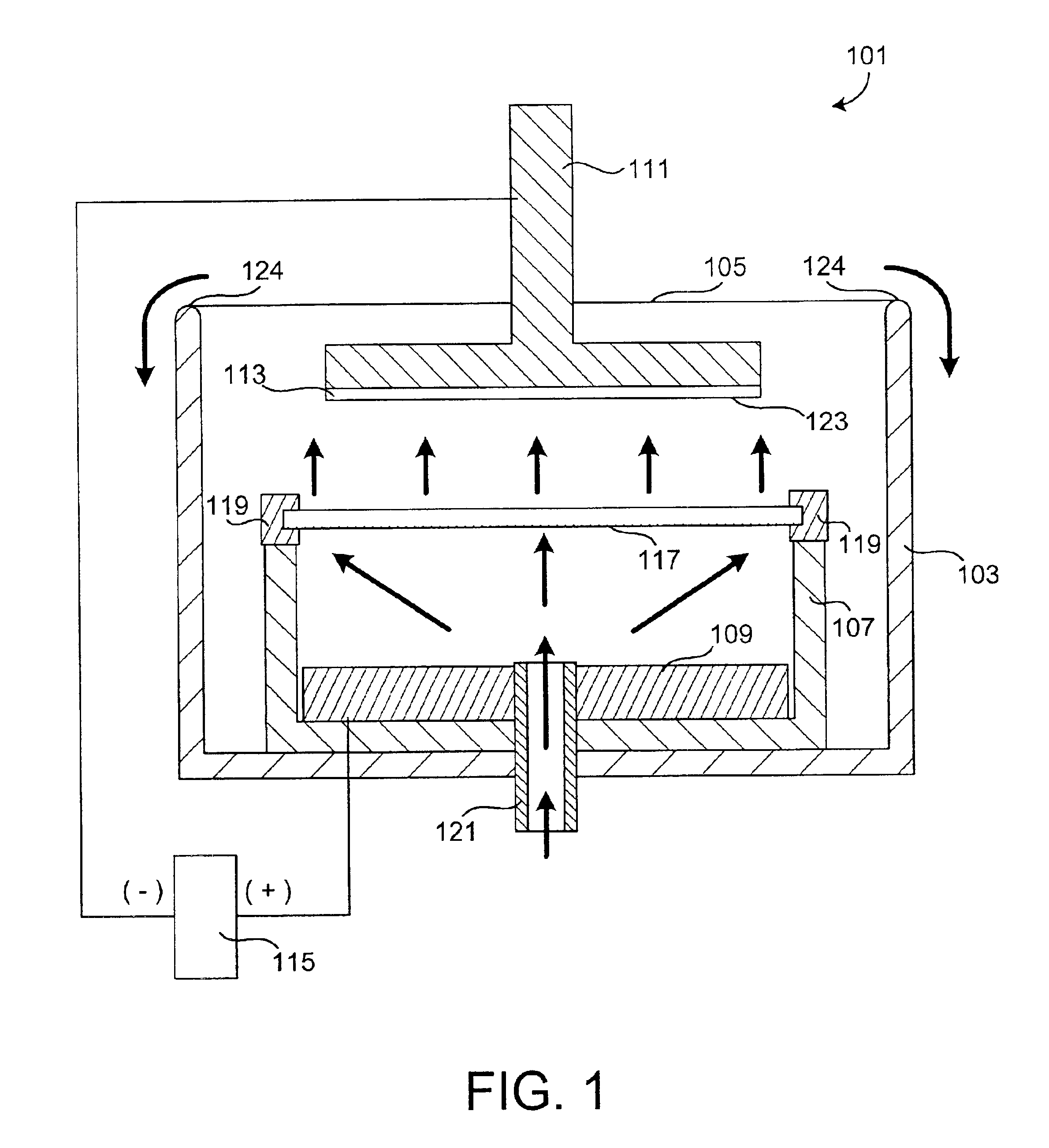Methods and apparatus for controlling electrolyte flow for uniform plating
a technology of uniform plating and electrolyte flow, which is applied in the direction of coatings, electrolysis components, electrolysis processes, etc., can solve the problems of uneven plating thickness and/or quality, and the quality of deposited metal films
- Summary
- Abstract
- Description
- Claims
- Application Information
AI Technical Summary
Benefits of technology
Problems solved by technology
Method used
Image
Examples
example 1
[0055]Modeling studies have shown that the flow from the top hole of an anode chamber flow nozzle impinges on the wafer in a jet-like fashion. This correlates with experimental data in which deposited films are thicker in the wafer center. Accordingly, the geometry of the top hole in such impinging nozzles was modified in several ways to see how such modifications effect the jet width and intensity at the wafer surface.
[0056]The five hole geometries modeled are shown in FIG. 3. FIG. 3 illustrates cross-sectional views of the following nozzle top hole geometries: 301, standard hole; 302, wide hole; 303, sloped hole; 304, flared hole; and 305, high aspect ratio hole. The dotted arrows indicated the direction of flow. To simplify analysis, side holes were closed in these models and the flow through the top was fixed at 8% of 6 liters / min. In this way the flow through each top hole would be the same as for a standard nozzle.
[0057]The realizable k-ε turbulence model was used in all cases...
example 2
[0061]FIG. 6 shows the highly uniform flow (model) achieved 1 mm from wafer surface when a diverting type nozzle, a diffuser membrane, and a slotted design clamshell with a flow path as described in FIG. 2B are used in combination. In this case, the wafer “sees” a highly uniform flow velocity across the wafer surface, with only a minimal change near the radius limit.
example 3
[0062]FIG. 7 shows a graph of pressure vs. flow rate in the anode chamber and the diffuser chamber. The graph shows actual data recorded using an anode compartment as described in FIG. 2B. The diffuser membrane was made of a sintered polyethylene produced by Portex Corporation of Fairburn, Ga. (extra fine to course grade materials). The diffuser membrane used was approximately ⅛ inch thick. The data shows that there is a measurable pressure differential between the anode chamber and the diffuser chamber.
PUM
| Property | Measurement | Unit |
|---|---|---|
| Fraction | aaaaa | aaaaa |
| Fraction | aaaaa | aaaaa |
| Fraction | aaaaa | aaaaa |
Abstract
Description
Claims
Application Information
 Login to View More
Login to View More - R&D
- Intellectual Property
- Life Sciences
- Materials
- Tech Scout
- Unparalleled Data Quality
- Higher Quality Content
- 60% Fewer Hallucinations
Browse by: Latest US Patents, China's latest patents, Technical Efficacy Thesaurus, Application Domain, Technology Topic, Popular Technical Reports.
© 2025 PatSnap. All rights reserved.Legal|Privacy policy|Modern Slavery Act Transparency Statement|Sitemap|About US| Contact US: help@patsnap.com



